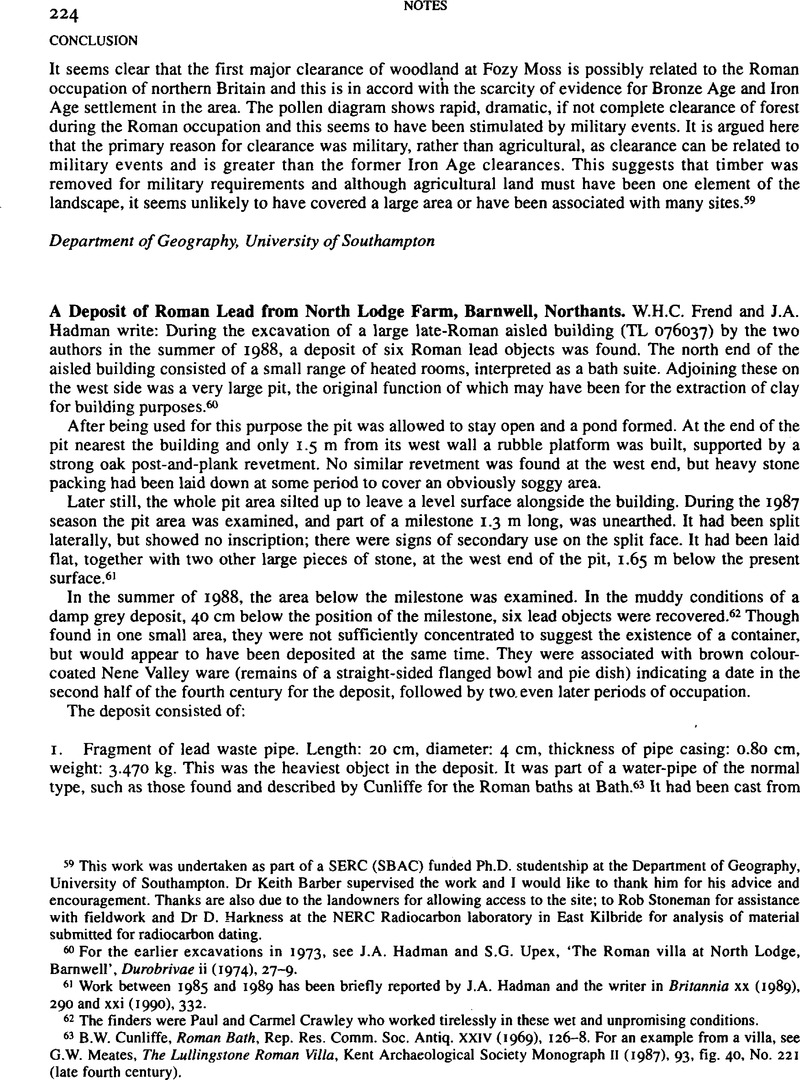No CrossRef data available.
Article contents
A Deposit of Roman Lead from North Lodge Farm, Barnwell, Northants
Published online by Cambridge University Press: 09 November 2011
Abstract

- Type
- Notes
- Information
- Copyright
- Copyright © W.H.C. Frend and J.A. Hadman 1994. Exclusive Licence to Publish: The Society for the Promotion of Roman Studies
References
60 For the earlier excavations in 1973, see Hadman, J.A. and Upex, S.G., ‘The Roman villa at North Lodge, Barnwell’, Durobrivae ii (1974), 27–9.Google Scholar
61 Work between 1985 and 1989 has been briefly reported by Hadman, J.A. and the writer in Britannia xx (1989), 290 and xxi (1990), 332.Google Scholar
62 The finders were Paul and Carmel Crawley who worked tirelessly in these wet and unpromising conditions.
63 Cunliffe, B.W., Roman Bath, Rep. Res. Comm. Soc. Antiq. XXIV (1969), 126–8Google Scholar. For an example from a villa, see Meates, G.W., The Lullingstone Roman Villa, Kent Archaeological Society Monograph II (1987), 93, fig. 40, No. 221 (late fourth century).Google Scholar
64 Meates, op. cit. (note 63), No. 225 (late second-century level).
65 Guy, C.J., ‘The Lead tank from Ashton’, Durobrivae v (1977), 10–11.Google Scholar
66 Cunliffe, op. cit. (note 63), 126.
67 The tanks possibly had a Christian use, see Watts, D.J., ‘Circular lead tanks and their significance for Romano-British Christianity’, Antiq. Journ. lxviii (1988), 210–22. Other lead objects are shown in Meates, op. cit. (note 63), 93, fig. 40, Nos 222-230.CrossRefGoogle Scholar
68 op. cit. (note 65).
69 A.O. Curie, The Treasure of Traprain (1923), 108: ‘The loot was broken up to allow equal distribution by actual, pieces’, of the hoard, which ‘represented the wealth of a robber band’. See his plates III, IV and XXXIV.
70 Described by Curie, op. cit. (note 69), ch. ii, ‘Some Analogous Hoards’.


